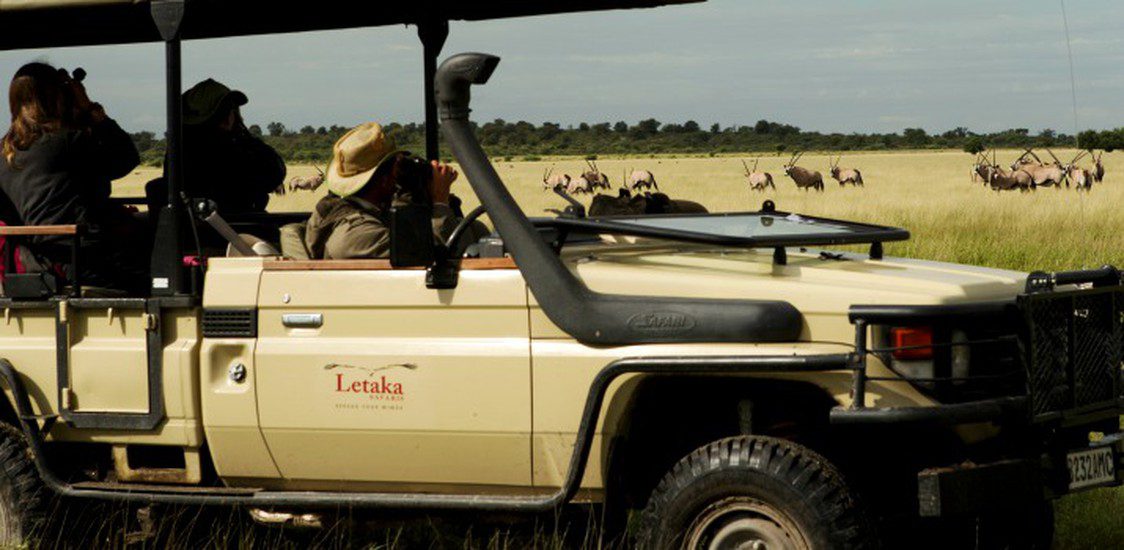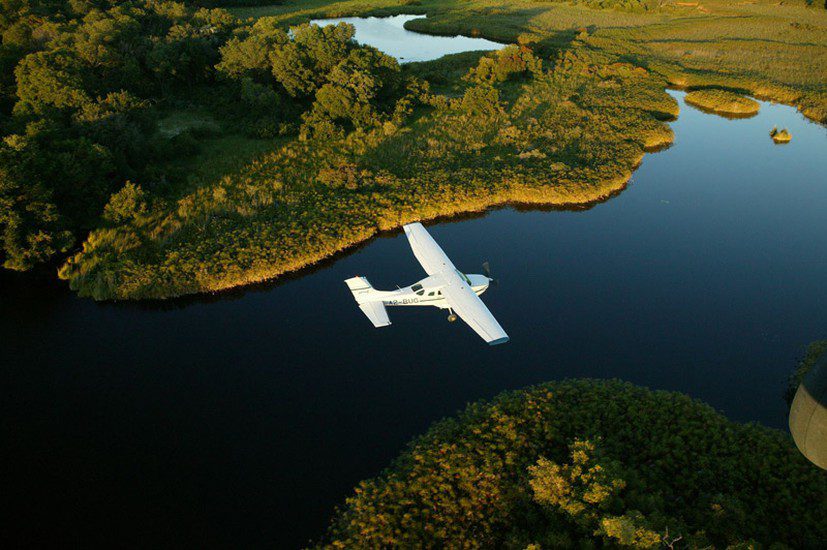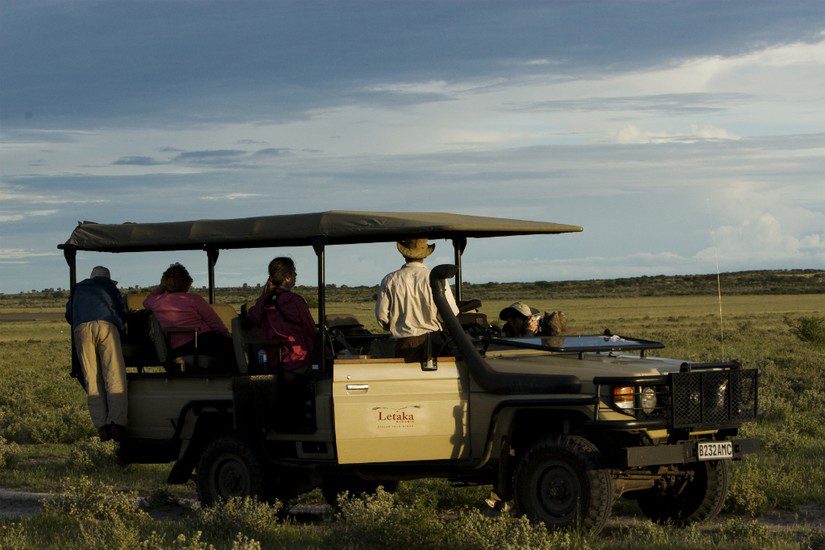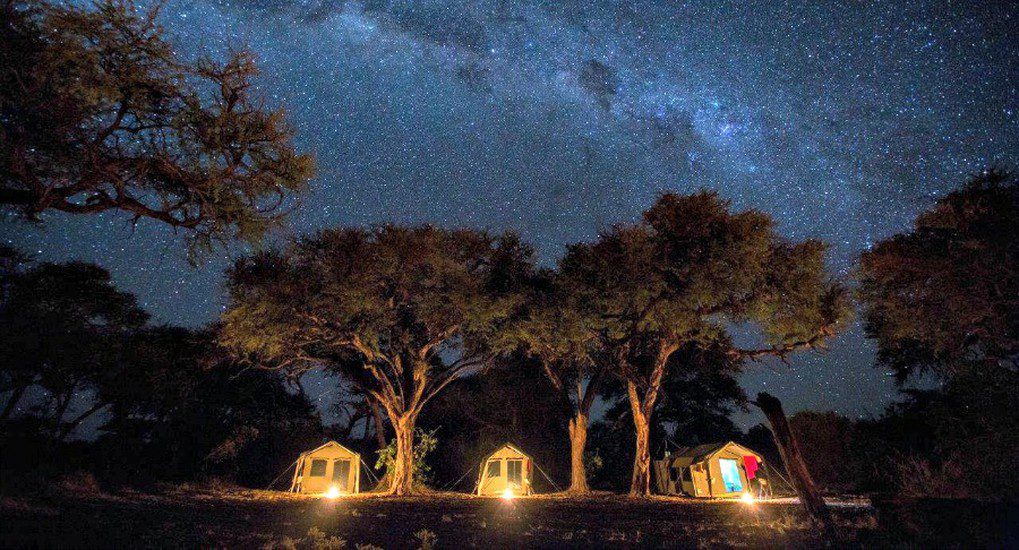Description
Overview
Countries visited: Botswana
This eleven day journey shares with you the very best that northern Botswana has to offer. Explore the Moremi Game Reserve in the far eastern Okavango Delta; the Khwai River; and the Savuti in the Chobe National Park. These variable habitats ensure a great diversity in bird, plant and wildlife – which you will have the opportunity to experience on game drives as well as bush walks, led by experienced and qualified, professional guides.
A moroko safari will reveal the wildlife of the waterways, while vehicle based night excursions will give you the opportunity to see elusive nocturnal species.
Perfect for couples, families, groups of friends, wildlife and photography enthusiasts.
Itinerary
Day 1: Maun to Xakanaxa
After your arrival at Maun International Airport you will board your charter flight at approximately 12h30 to the Xakanaxa airstrip in Moremi Game Reserve where you will be met by your guide.Our first three nights are spent in the Xakanaxa region where we explore the surrounding wilderness on morning and afternoon game drive excursions.
Activities: Game Drives
Day 2-3: Xakanaxa and Moremi Game Reserve
The next couple of days will be spent exploringing the Moremi Game Reserve.
Moremi lies on the eastern extremity of the Okavango Delta. Habitats here range from wide-open floodplains, marshes, lagoons, papyrus fringed channels, vast stands of Miscanthus and Phragmites, woodland and savannah. As a result of the extremely variable habitat the diversity of both wildlife and birdlife is excellent.
Activities: Game Drives
Day 4: Xakanaxa to Khwai
Following an early morning breakfast you take a slow drive through Moremi Game Reserve north-east towards the Khwai Community Area.
The Manuchira Channel is known as the Khwai River at its eastern most extremity. The day’s journey follows this water course, with the track weaving from the riverside and floodplains into the mopane veld and the woodlands that make Khwai one of the most scenic areas of the Okavango. We pass the magnificent Dombo Hippo Pools in the morning stopping to enjoy the scenery and the antics of the resident hippo.
Activities: Game drive and night drive
Day 5-6: Khwai Exploration Days
The Khwai River forms a boundary between the reserve and the community area. We spend the following two nights camping at an exclusive campsite in the community area, exploring the Khwai floodplains on game drives both during the day and at night. Exploring after dark with spotlights offers you an opportunity to experience some of the nocturnal animals that are rarely encountered during the day.
We will also have the opportunity to explore the surrounding wilderness on foot and mokoro and enjoy an up close and personal encounter with Botswana’s flora and fauna. It is important to note that night drives and guided walks are not permitted within the national parks and reserves. These activities are conducted outside the boundaries of the Moremi Game Reserve in the Khwai community area.
We spend our time between the dry-land habitats of the lead-wood and camel-thorn woodlands and savannahs and the riverside and marshy back-waters of the Khwai. Time permitting we may visit the lagoons and waterways of Xakanaxa where the largest heronry in southern Africa exists.
Activities: Game Drive, Walking Safaris (conditions permitting) Night Drives and mokoro excursion
Day 7: Khwai to Savuti
We head further north en-route to Chobe National Park, were we spend the following three nights camping in an exclusive wilderness campsite in the Savuti region, exploring the dessert-like landscape of game drives.
A fascinating days drive looking at some of the evidence of the Paleo-Lake Makgadikgadi that dried up some ten thousand years ago. The most challenging part of the trip is crossing the Magwikwe Sand-ridge that formed the shoreline for this massive inland sea. The winding track through this deep sand makes for interesting travel in the early summer! The old lake bed is now the Mababe Depression. The dense clay floor of the depression result in high protein feed for wildlife and the area teams with game after the rains. During the rain season the depression is impassable due to the “cotton soil” and alternative routes must be used.
Activities: Morning and Afternoon Game Drives
Days 8-9: Savuti (Chobe National Park) Exploration days
Unlike the vast majority of the country, Savuti is not a totally flat landscape. Large outcrops of volcanic rock reach up out of the Kalahari sands, towering over the endless savannah. These hills provide habitat for a completely different array of small wildlife, birds and plants. The Savuti Marsh has been the stage for many of the most dramatic wildlife documentaries in Africa. The wide open country, good ungulate populations and particularly strong prides of lion and hyaena clans make for dramatic wildlife interaction and excellent viewing opportunities. The now dry Savuti Channel runs through this landscape linking the dry sand-veld, the waterholes, the hills and the grassland that was the Savuti Marsh.
Activities: Game Drives and Bushman Painting Walks
Day 10: Savuti to Chobe River
On our final day on safari we will leave Savuti early to travel along the Chobe River arriving at Chobe Safari Lodge where we will stop for lunch before taking an afternoon boat cruise to end your safari. We will return to Chobe Game lodge and for our overnight.
Day 11: End of Safari
Today after breakfast you will depart to Kasane Airport for your flight back to Johannesburg
Wildlife
Xakana Region:
Wildlife: From the air only the larger animals are easily seen. These include large breeding herds of African elephant that live in the mopane scrub. On the open plains large herds of buffalo and lechwe can be seen and in the waterways, pods of hippopotamus are a common sight. Once you land in Xakanaxa and board your land cruiser, the smaller game animals can be found.
Birding: A good day for raptors with African Hawk-Eagle, Gabar Goshawk, Shikra, Little Sparrowhawk, Dark Chanting Goshawk, Tawny Eagle, Lesser Spotted Eagle* and Steppe Eagle* all inhabiting the mopane and adjacent woodlands. Other birds common along this route includes most of Botswana’s hornbills including Red-billed, Southern Yellow-billed, African Grey, Bradfield’s and the Southern Ground Hornbills. A large number of brood-parasites may also be seen. Diederick Cuckoo*, Levaillant’s Cuckoo*, Jacobin Cuckoo*, Great-spotted Cuckoo*, African Cuckoo*, Common Cuckoo*, Shaft-tailed Whydah, Pin-tailed Whydah, Eastern Paradise Whydah, Greater Honeyguide, and Lesser Honeyguide.
Moremi Game Reserve:
Wildlife: Moremi is amongst the best game reserves in Africa for viewing the endangered African wild dog. Xakanaxa is home to a resident herd of several hundred buffalo whose range covers the territories of at least 4 prides of lion which may often be seen flanking the ever moving herd. Breeding herds of elephant move between their browsing areas in the mopane forests and the fresh water of the Okavango. Red lechwe are one of the more unusual antelope species and commonly found here.
Birding: The swampy areas of Xakanaxa are home to African Rail, Coppery-tailed Coucal, Black Coucal*, Red-chested Flufftail, African Crake*, Black Crake, Chirping Cisticola, Luapula Cisticola, Purple Swamphen, Allen’s Gallinule to name but a few. The open waters attract African Skimmer, Saddle-billed Stork, Yellow-billed Stork, Intermediate Egret, Goliath Heron, African Fish Eagle as well as the globally threatened Slaty Egret and Wattled Crane.
Khwai:
Wildlife: The western mopane veld is home to mostly breeding herds of elephant whilst the eastern reaches of Khwai is home to some impressive old bulls. The mature bulls revel in the cool waters of the Khwai and are far more approachable while drinking and bathing than the breeding herds. The river has an unusually high density of hippo as well as some huge crocodile. Leopard, cheetah, serval and lion are common predators along this route and both Xakanaxa as well as Khwai are included in the home ranges of 2 different packs of wild dog. General game includes southern giraffe, Burchell’s zebra, tessebe and red lechwe with roan and sable antelope being less common residents.
Birding: In the mopane woodlands African Hawk-Eagle, Tawny Eagle, Gabar Goshawk, Little Sparrowhawk, African Harrier Hawk and Shikra are common raptors. Mixed bird parties move through the canopy and include Red-headed Weaver, Stierling’s Wren-Warbler, Scarlet-chestedSunbird, Neddicky, Yellow-breasted Apalis, Chin-spot Batis, Diederik Cuckoo* to name but a few. The verges of the swamp form breeding grounds for the Rosy-Longclaw, Black Coucal*, Long-legged Bustard and the African Crake*
Savuti:
Wildlife: A day when anything could happen. The range of habitat that is covered encompasses most of the habitat types of northern Botswana. We pass through excellent lion country and some of the best cheetah country that our safari will cover. Elephant occur throughout the drive but are more common at the start and end of the drive where permanent surface water can be found.
Birding: The Mababe Depression is a birder’s paradise. The nutritious grasses that grow on the rich soils provide excellent seed for an impressive array of estrillids and viduids. Among these are the magnificently coloured Violet-eared Waxbill, Black-cheeked Waxbill, Village Indigobird, Shaft-tailed Whydah and Paradise Whydah. These in turn provide a good food source for small raptors such as the Little Sparrowhawk, Shikra, Gabar Goshawk, Red-necked Falcon and Lanner Falcon. It is not only the small birds that feed on the grass seeds, but rodents too. There are annual outbreaks of huge numbers of rats and mice. As a result huge numbers of Secretary Bird, Tawny Eagle, Black-shouldered Kite, Steppe Eagle*, Lesser-spotted Eagle*, Wahlberg’s Eagle* and Steppe Buzzard* can be found.
Chobe River:
Wildlife: While there are community areas that we pass through that are settled by local tribes, for the vast majority of the day’s drive we pass through wild country where wildlife moves un-inhibited by fences or man. Roan and sable antelope thrive in the teak woodlands where the low density of predators and lack of competition for food by other ungulates makes this prime habitat for these large ungulates. Leopard occur in these woodlands in low numbers but they are highly secretive and seldom seen. The Goha region has natural waterholes that hold water well into the dry season and herds of buffalo, Burchell’s zebra, greater kudu and elephant come down to drink.
Birding: The most unusual species are to be found in the teak (Baikea plurijuga)woodlands. This broad-leafed woodland, or miombo as it is locally known, provides good pickings for insectivorous birds that favour canopy habitat. Grey Tit-Flycatcher, Ashy Flycatcher, Paradise Flycatcher, Pallid Flycatcher, Scarlet-chestedSunbird, AmethystSunbird, Yellow-throated Petronia, Red-headed Weaver and Violet-backed Starling are only some of the species that move around in the “bird parties” in the canopy. Dickenson’s Kestrel, Red-necked Falcon, Peregrine Falcon* and Lizard Buzzard are some of the raptors to keep an eye out for, while the diminutive White-faced Owl can often be seen roosting in the road-side vegetation. Flappet Lark, Fawn-coloured Lark, Dusky Lark*, Olive-Tree Warbler* and Neddicky are species more likely to be enjoyed by the birding enthusiast.
More Info
Although we make every effort to adhere to schedules and itineraries, these are subject to change subject to weather (specifically with current flood conditions, the driving times may differ between the areas quite considerably depending upon the time of year),, roads, and animal movements and availability. You will be notified of any changes.
Safari Includes:
Spacious and comfortable tented accommodation, including beds and bed linen, with a private bathroom en-suite.
Services of a professional guide, safari chef and camp assistants, complete with a supply vehicle.
Game drives and local transfers in customised safari vehicles
Exclusive camping in private campsites within the national parks and reserves
All entrance and camping fees within the national parks and reserves
All meals and drinks (mineral water, soft drinks, beer, wine and G&T) whilst in Letaka Tented Camps
Overnight at Chobe Safari Lodge
Dinner & breakfast at Chobe Safari Lodge
Transfer from Chobe Safari Lodge to Kasane
All activities as specified in the itinerary
12% Value Added Tax
Safari Excludes:
Travel Insurance
All flights unless otherwise indicated
Items of personal nature
Toiletries
Staff gratuities
Optional safari extensions
Any drinks at lodges or accommodation other than Letaka Tented Camps
FOR SPECIAL DISCOUNTED RATES AND LONG STAY RATES PLEASE KINDLY
CONTACT US ON + 27 606191220
OR
EMAIL [email protected]
FOR MORE INFORMATION










